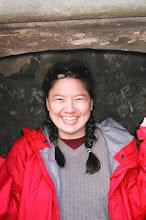Gnamptogenys
John Lattke was in town last week and was kind enough to take a quick look at my Gnamptogenys. Here is a summary of his findings:
- he pulled a couple of G. moelleri from my group of G. striatula.
"These two species can sometimes be hard to tell apart, especially the smaller G. moelleri can be easily confused with G. stritula. The one character that seem to help is the gauge of the seta (longer hairs) on the body dorsum. They are noticeably thicker on moelleri than striatula."
I myself do not see much of a difference, aside from them moelleri being a bit larger, but there you go. - A group of ants I had labeled KTRW-002 (also Mystery Ant #4) he identified as G. mina.
- Originally I had 4 specimens of sulcata and noted that there are two distinct groups. One group is larger with the mesosoma the same dark color as the head. This group was collected in the canopy. The second group is slightly smaller, with the mesosoma varying from a yellow/orange color to brown (sometimes on the same specimen). Head is still black. All of these specimens were collected from a pitfall trap. They all keyed out very clearly to sulcata, though, so I put them together. Dr. Lattke split them up.
"It is probable that a combination of molecular and morphological methods will be needed to clear things up, plus a lot of collections from all over [speaking of striatula]. The same situation holds for G. sulcata, which is another complex complex of species! I have unfortunately made things worse in the Festschrift key by mixing up the character that separates sulcata group from ericae! The petiolar node for sulcata should have its posterior face transversely costulate; and the node in ericae should be longitudinally costulate in posterior view. I had this correct in the revision, but inverted it in the new key. The sulcata in your collection are defintely two different things."
- I also had a couple of weird specimens that keyed out to striatula but which looked odd enough to me that I pulled them aside to deal with later. Dr. Lattke agreed that they were almost certainly two new species of Gnamptogenys.
"You do have what seem to be undescribed species in the striatula group. I put “a” and “b” labels on them. G “a” is new on account of the shape of the petiole, the narrow propodeal dorsum and the flattened surface of abdominal tergite III. G “b” is new on account of the narrow rectangular head and the transversely costulate propodeal declivity."
 I will post photos of these new species to my website as soon as possible. The image above is a poor photo of species "b"
I will post photos of these new species to my website as soon as possible. The image above is a poor photo of species "b"


No comments:
Post a Comment